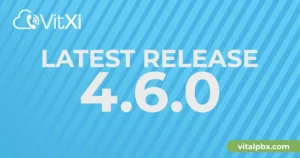No CRM Integration? Your Agents Are Flying Blind
In today’s hyper-competitive business landscape, customer experience reigns supreme. Yet, many contact centers are unknowingly handicapping their agents, forcing them to navigate customer interactions without the crucial insights provided by CRM integration. Imagine a pilot trying to land a plane in thick fog with no instruments – that’s akin to your agents operating without a seamlessly integrated Customer Relationship Management (CRM) system. They are, quite frankly, flying blind. This lack of visibility not only frustrates agents but also significantly damages customer satisfaction, operational efficiency, and ultimately, your bottom line. As we look towards 2025, rectifying this with robust CRM integration isn’t just an upgrade; it’s a fundamental necessity for survival and growth.
This post will explore the critical reasons why operating without CRM integration is detrimental and how solutions like VitalPBX can illuminate the path for your agents, transforming them from navigators in the dark to well-equipped pilots of customer satisfaction.
The High Cost of Operating in the Dark: Why No CRM Integration Cripples Your Contact Center
Operating a contact center without proper CRM integration is like trying to build a detailed picture puzzle with half the pieces missing. The information agents need is scattered, siloed, or simply unavailable at the crucial moment of interaction. This leads to a cascade of negative consequences that ripple through every aspect of your operations.
Plummeting Agent Efficiency and Skyrocketing Frustration
When your phone system and CRM don’t communicate, agents waste precious time toggling between applications, manually searching for customer history, and re-entering data. This constant swivel-chair effect is a major drain on productivity.
- Increased Average Handle Time (AHT): Agents take longer to resolve issues because they lack immediate access to context like previous interactions, purchase history, or support tickets.
- Manual Data Entry Errors: Requiring agents to manually log call details into a separate CRM invites errors, leading to inaccurate customer records and flawed reporting.
- Agent Burnout: Constantly struggling with inefficient tools and processes leads to frustration and higher agent turnover – a costly problem for any contact center. A recent study by HubSpot highlighted agent empowerment as key to retention.
Without CRM integration, simple tasks become laborious, and agents spend more time wrestling with systems than engaging with customers.
The Domino Effect: Poor Customer Experience and Lost Loyalty
Customers in 2025 expect personalized and efficient service. They don’t want to repeat their issues to multiple agents or feel like they’re interacting with a company that doesn’t know them.
- Lack of Personalization: Without integrated CRM data, agents can’t greet customers by name, acknowledge their history, or offer relevant solutions. This makes interactions feel impersonal and transactional.
- Increased Customer Frustration: Repeating information or being put on hold while an agent hunts for details is a major source of customer annoyance, leading to lower CSAT scores.
- Higher Churn Rates: Consistently poor service experiences due to a lack of CRM integration will inevitably drive customers to competitors who offer a smoother, more informed journey.
Your agents are the face of your company. If they’re “flying blind,” the customer experience will inevitably crash.
Missed Opportunities and Flawed Business Intelligence
The absence of CRM integration doesn’t just impact immediate interactions; it also clouds your strategic vision.
- Inability to Identify Upsell/Cross-sell Opportunities: Without a complete view of the customer’s history and preferences readily available during a call, agents miss vital cues for upselling or cross-selling relevant products or services.
- Inaccurate Reporting and Analytics: Data siloed in separate systems makes it nearly impossible to get a holistic view of customer interactions, agent performance, or campaign effectiveness. This hampers informed decision-making.
- Difficulty in Tracking Customer Journey: Understanding the complete customer lifecycle, from initial contact to post-sale support, becomes a guessing game, preventing you from optimizing touchpoints.
Ultimately, a lack of CRM integration means you’re making business-critical decisions based on incomplete or inaccurate information – a risky proposition in any market.
Gaining 20/20 Vision: The Transformative Power of PBX and CRM Integration
Integrating your PBX system, like VitalPBX, with your CRM is like giving your agents a state-of-the-art cockpit, complete with every instrument they need for a smooth and successful flight. This synergy unlocks a new level of efficiency, personalization, and customer satisfaction.
Empowering Your Agents: How Integrated CRM Data Revolutionizes Interactions
When your communication system and customer database work in harmony, agents are instantly equipped with a wealth of information at their fingertips. This powerful combination transforms how they interact with customers and manage their workflows.
Hyper-Personalization: Crafting Tailored Customer Experiences
Imagine an incoming call. Before the agent even says “hello,” their screen populates with the caller’s complete profile, thanks to CRM integration.
- Instant Caller Identification: Caller ID is matched with CRM records, displaying the customer’s name, company, and contact details.
- Comprehensive Interaction History: Agents see past purchases, support tickets, previous conversations (even across different channels), and any notes from other team members. For instance, if a customer called last week about a billing issue, the agent sees this immediately and can proactively address it.
- Proactive Service: Knowing a customer’s preferences or recent challenges allows agents to anticipate needs and offer tailored solutions, making the customer feel understood and valued. This is a core tenet of building customer loyalty in 2025.
This level of insight, facilitated by systems like VitalPBX integrating with your CRM, allows for truly personalized service, moving beyond generic scripts to meaningful conversations. To learn more about modern phone systems, check out The Ultimate Guide to Choosing a Business Phone System on our blog.
Streamlined Workflows and Supercharged Efficiency with CRM Call Integration
CRM integration automates many of the manual tasks that slow agents down, allowing them to focus on what they do best: helping customers.
- Click-to-Call Functionality: Agents can initiate calls directly from the CRM record with a single click, eliminating misdials and saving time.
- Automatic Call Logging: Details of every call (time, duration, agent, and often a link to the recording) can be automatically logged in the CRM against the correct customer record. This ensures data accuracy and frees agents from manual data entry.
- Reduced Average Handle Time (AHT): With all information readily available, agents can resolve queries faster, improving AHT and allowing them to handle more interactions.
- Screen Pops: For incoming calls, the relevant customer record automatically appears on the agent’s screen, providing immediate context.
These workflow enhancements significantly boost individual agent productivity and overall contact center efficiency.
Crystal-Clear Insights: Enhanced Data Accuracy and Powerful Reporting
The data integrity that comes with CRM integration is invaluable for business intelligence.
- Single Source of Truth: Integrating systems ensures that customer data is consistent and up-to-date across platforms, eliminating discrepancies.
- Comprehensive Performance Metrics: Track key performance indicators (KPIs) like first call resolution (FCR), agent productivity, and customer satisfaction with greater accuracy.
- Improved Sales and Marketing Alignment: Sales teams get cleaner leads, and marketing can better track campaign effectiveness based on data flowing seamlessly from communications into the CRM. As Gartner research often points out, aligned data is crucial for customer journey optimization.
With robust CRM integration, you’re no longer guessing; you’re making data-driven decisions to steer your business towards success.
VitalPBX and CRM: Your Flight Plan for Peak Contact Center Performance
At VitalPBX, we understand that seamless communication is the cornerstone of excellent customer service and operational efficiency. That’s why our PBX solutions are designed with CRM integration at their core, empowering your agents and transforming your customer interactions.
Seamless Synergy: How VitalPBX Elevates Your CRM Strategy
VitalPBX isn’t just a phone system; it’s a communications hub designed to work in concert with your existing business tools, especially your CRM. Our focus on open standards and flexible APIs ensures that integrating VitalPBX with a wide array of popular CRM platforms is straightforward and effective.
Key VitalPBX Features Amplifying CRM Integration Benefits
VitalPBX offers a suite of features that, when combined with your CRM, create a powerful, unified environment for your agents:
- Click-to-Dial: Agents can initiate calls directly from within your CRM interface by simply clicking on a phone number. This eliminates manual dialing errors, saves time, and streamlines outbound calling campaigns.
- Automated Call Logging: VitalPBX can automatically log call details (such as caller ID, call duration, time of call, and agent handling the call) into the relevant CRM record. This ensures comprehensive tracking of all customer interactions without manual effort from agents, improving data accuracy and completeness.
- Call Recording Access: Links to call recordings can be embedded within the CRM call log, providing easy access for quality assurance, training, or dispute resolution.
- Unified Communications (UC) Capabilities: Features like presence, chat, and video conferencing, integrated alongside CRM data, provide a richer context and more ways for teams to collaborate on customer issues. Understanding Unified Communications and Its Benefits can provide further insight.
Real-World Scenarios: VitalPBX and CRM Integration in Action
Let’s consider a couple of practical examples of how VitalPBX’s CRM integration can make a tangible difference:
- Scenario 1: The Support Call Reimagined
Sarah, a customer, calls your support line. Thanks to VitalPBX’s CRM integration, the agent, Mark, instantly sees Sarah’s profile pop up. He notes she recently purchased Product X and had a support ticket logged last week for a minor setup issue.- Without Integration: Mark would ask Sarah for her account details, put her on hold to look up her history, and potentially ask her to repeat information she already provided.
- With VitalPBX + CRM: Mark greets Sarah by name, acknowledges her recent purchase, and asks, “Hi Sarah, I see you recently got Product X. Are you calling about the setup query from last week, or is this something new?” This personalized and informed approach immediately builds rapport and speeds up resolution.
- Scenario 2: Proactive Sales Follow-Up
Your sales team is following up on leads generated from a recent webinar. Using VitalPBX’s click-to-dial feature within the CRM, sales agent Lisa can efficiently work through her call list.- Without Integration: Lisa would manually dial each number, then switch to the CRM to log notes, then back to her list, wasting time and risking errors.
- With VitalPBX + CRM: Lisa clicks a contact in the CRM, VitalPBX dials the number. After the call, call details are automatically logged. She can quickly note outcomes and move to the next lead, significantly increasing her call volume and conversion potential.
These scenarios illustrate how VitalPBX’s commitment to robust CRM integration directly translates into improved agent performance and superior customer experiences.
Charting Your Course: Successfully Implementing PBX-CRM Integration in 2025
Embarking on a CRM integration project with your PBX system can seem daunting, but with careful planning and the right technology partner, it can be a smooth and highly rewarding journey. The goal is to equip your agents with the tools they need, not to add another layer of complexity.
Navigating the Implementation: Key Considerations for a Smooth Transition
A successful PBX and CRM integration strategy involves more than just flipping a switch. It requires thoughtful consideration of your current setup, future needs, and, crucially, your team’s adoption of the new processes.
Assessing Your Current Landscape and Future Aspirations for CRM Connectivity
Before diving into technical specifications, take a step back and evaluate:
- Current Pain Points: Identify the specific inefficiencies and frustrations your agents and customers experience due to the lack of integration. Are call times too long? Is data entry a nightmare? Are customers complaining about repeating themselves?
- Existing Infrastructure: What CRM are you currently using? What are its integration capabilities (e.g., APIs)? What version of VitalPBX are you on, or are you considering implementing it? (For more on PBX systems, see: Why Your Business Needs a Modern PBX System)
- Business Objectives for 2025 and Beyond: What do you want to achieve with this integration? Improved FCR? Increased sales conversion? Higher CSAT scores? Clearly defined goals will help measure success.
- Data Mapping: Understand what information needs to flow between the PBX and CRM. Which fields in the CRM should be populated by call data? What CRM data should be displayed to agents during a call?
- Scalability: Choose an integration solution that can grow with your business. Will it support more agents, higher call volumes, or integration with other tools in the future?
Answering these questions will provide a clear roadmap for your CRM integration project.
Beyond Technology: Ensuring Team Training and Adoption for Your Integrated CRM Solution
The most sophisticated integration is useless if your team doesn’t understand how to use it or doesn’t see its value.
- Comprehensive Training: Provide thorough training for all users, focusing on how the integration streamlines their specific workflows and benefits them directly. Use real-life scenarios relevant to their daily tasks.
- Highlight the “What’s In It For Me?” (WIIFM): Show agents how CRM integration makes their jobs easier, reduces repetitive tasks, and empowers them to provide better service (which can lead to better performance reviews or bonuses).
- Develop Clear Standard Operating Procedures (SOPs): Document how the integrated system should be used for various call types and scenarios.
- Appoint Champions: Identify tech-savvy team members who can act as internal champions, assisting colleagues and promoting best practices.
- Phased Rollout (if applicable): For larger organizations, consider a phased rollout to a pilot group. This allows you to gather feedback and iron out any kinks before a company-wide deployment.
- Ongoing Support and Feedback Channels: Establish clear channels for agents to ask questions, report issues, and provide feedback on the integration. Continuous improvement is key.
Investing time in proper planning, training, and change management is crucial for maximizing the ROI of your CRM integration and ensuring your agents are truly empowered, not just equipped with new software.
Frequently Asked Questions (FAQs) About CRM Integration
Navigating the world of CRM integration can bring up many questions. Here are answers to some common queries to help you understand its importance and how VitalPBX can assist.
What exactly is CRM integration in a call center context?
CRM integration in a call center context refers to the seamless connection and data synchronization between your Customer Relationship Management (CRM) software and your telephony system (like VitalPBX). This allows for information to flow bi-directionally, so agents have customer data at their fingertips during calls, and call data is automatically logged back into the CRM. Think of it as making your phone system “CRM-aware.”
Why is CRM integration so crucial for business success in 2025?
In 2025, customer expectations are at an all-time high. CRM integration is crucial because it enables:
- Personalized experiences: Meeting demands for tailored interactions.
- Operational efficiency: Reducing wasted time and resources.
- Data-driven decisions: Providing accurate insights for strategy.
- Competitive advantage: Differentiating your service from those still operating with siloed systems.
Without it, businesses struggle to keep up, leading to lost customers and revenue.
How does robust CRM integration improve First Call Resolution (FCR)?
CRM integration significantly improves FCR by providing agents with immediate access to a caller’s complete history. When an agent can see past interactions, purchases, and unresolved issues without asking the customer to repeat themselves or putting them on hold, they are far better equipped to diagnose and solve the problem on the first contact. This leads to happier customers and more efficient agents.
Can VitalPBX integrate with my company’s existing CRM system?
VitalPBX is designed with flexibility and open standards in mind. We offer various methods for CRM integration, including APIs and compatibility with many third-party connectors, making it possible to integrate with a wide range of popular CRM platforms (e.g., Salesforce, Zoho, HubSpot, SugarCRM, and many others). We recommend discussing your specific CRM with our team to explore the best integration pathway. Our goal is to ensure VitalPBX works harmoniously with the tools you already use. For more on how VitalPBX can help boost productivity, read Boosting Call Center Productivity: Tips and Tricks.
What are the clear signs that my business desperately needs CRM integration?
Your business likely needs CRM integration if you observe:
- Agents frequently complaining about toggling between screens or manual data entry.
- Customers expressing frustration about repeating information.
- High Average Handle Times (AHT) for calls.
- Difficulty in getting accurate reports on customer interactions or agent performance.
- Missed sales opportunities due to lack of customer context during calls.
- Inconsistent customer data across different systems.
If these sound familiar, your agents are likely “flying blind,” and it’s time to consider CRM integration.
How does not having CRM integration affect agent morale and turnover?
Operating without CRM integration directly impacts agent morale. Constantly struggling with inefficient tools, facing frustrated customers due to lack of information, and performing tedious manual data entry leads to increased stress and job dissatisfaction. This can contribute significantly to higher agent burnout and turnover rates, which are costly for any business in terms of recruitment, training, and lost knowledge. Empowering agents with efficient tools like integrated CRMs is key to a happier, more stable workforce.
Stop Flying Blind: Empower Your Agents with VitalPBX CRM Integration
The message is clear: operating without CRM integration in 2025 is no longer a viable option. It leaves your agents struggling, frustrates your customers, and puts your business at a significant competitive disadvantage. Your team is forced to navigate complex customer interactions without the essential visibility and tools they need to succeed, effectively flying blind in an increasingly demanding environment.
By failing to connect your communication systems with your customer data, you’re not only hampering agent productivity and efficiency but also sacrificing the quality of customer experience. This leads to longer call times, unresolved issues, impersonal service, and ultimately, lost revenue and customer loyalty. The hidden costs of manual data entry, errors, and missed opportunities quickly add up, far outweighing the investment in a proper integration solution.
It’s time to equip your agents with the 20/20 vision they deserve. CRM integration with a robust PBX like VitalPBX transforms your contact center from a disjointed operation into a streamlined, customer-centric powerhouse. Imagine agents empowered with instant customer insights, streamlined workflows, and the ability to deliver truly personalized service with every call. This is the future of customer interaction, and it’s achievable now.
Ready to give your agents the flight instruments they need to soar?
Don’t let your business stumble in the dark any longer. Discover how VitalPBX can seamlessly integrate with your CRM, illuminating your customer data and empowering your agents to deliver exceptional experiences.




